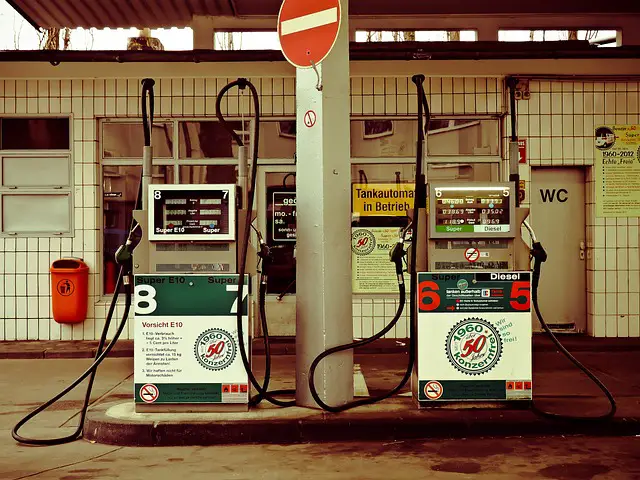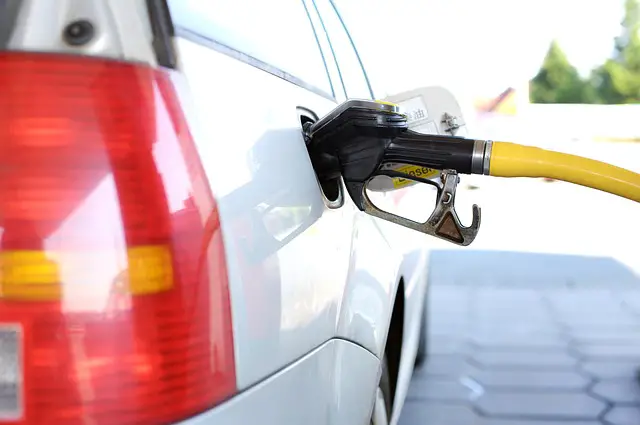Winter gas has a higher volatility to aid cold starts, while summer gas has lower volatility to prevent vaporization in high temperatures.
TL;DR Winter Gas Vs. Summer Gas
Winter gas, also known as winter blend gasoline, is formulated with a higher concentration of butane to help it vaporize in cold temperatures. This ensures that vehicles can start easily even in frigid weather conditions.
Summer gas, or summer blend gasoline, contains less butane and more volatile compounds such as ethanol to prevent excessive evaporation during warmer months.
What is Winter Gas?
Winter gas, a seasonal variant of fuel, is formulated to perform efficiently in colder temperatures. It has a higher volatility, meaning it vaporizes more easily, aiding combustion during cold starts.
The formulation prevents fuel line freezing and ensures optimal engine performance in winter conditions.
Components like butane are added to achieve the desired vapor pressure. While beneficial in colder months, winter gas may lead to reduced fuel efficiency as temperatures rise due to increased vaporization. Fuel regulations often mandate this transition to address specific climate challenges and ensure the smooth functioning of vehicles during winter.
What is Summer Gas?

Summer gas, a seasonal gasoline variant, is tailored for warmer temperatures. Its formulation adjusts vapor pressure to prevent excessive evaporation in the heat, optimizing engine performance.
With lower volatility, summer gas reduces emissions during hot weather. It typically contains additives that enhance fuel stability and combustion efficiency. The adjusted composition prevents vapor lock, a phenomenon where fuel vaporizes before reaching the engine, disrupting its operation.
While designed for summer conditions, its use may lead to increased emissions during colder weather. The formulation of gasoline is seasonally adjusted to ensure reliable vehicle performance and compliance with environmental standards.
Winter Gas Vs. Summer Gas – Key differences
| Characteristic | Winter Gas | Summer Gas |
|---|---|---|
| Vapor Pressure | Higher vapor pressure to aid cold starts | Lower vapor pressure to prevent evaporation |
| Composition | More butane for easier cold weather combustion | Less butane, additional additives for stability |
| Volatility | Higher volatility for efficient cold weather | Lower volatility for reduced evaporation |
| Evaporation Rate | Faster evaporation in colder temperatures | Slower evaporation in warmer temperatures |
| Emissions | May contribute to increased cold-start emissions | Reduces emissions in hot weather |
| Seasonal Availability | Available during winter months | Available during summer months |
Differences in Chemical Composition between Winter and Summer Gas
While specific formulations vary, winter and summer gasoline compositions generally differ to suit temperature conditions. Here are the key differences in chemical composition:
Winter Gas:
- Higher Butane Content: Increased for easier cold weather combustion.
- Vapor Pressure: Higher vapor pressure to aid cold starts.
- Anti-icing Additives: Additional compounds to prevent fuel line freezing.
Summer Gas:
- Lower Butane Content: Reduced to enhance stability in warmer temperatures.
- Additional Additives: Includes stabilizers and antioxidants.
- Lower Vapor Pressure: Decreased to prevent excessive evaporation.
These adjustments ensure optimal engine performance and emission control under seasonal temperature variations.
Pros and Cons of Winter and Summer Gas
Winter Gas:
Pros:
- Improved Cold-Weather Performance: Higher butane content enhances combustion in low temperatures.
- Easier Cold Starts: Higher vapor pressure aids engine ignition during cold weather.
- Anti-Icing Properties: Contains additives to prevent fuel line freezing.
Cons:
- Reduced Energy Content: Butane-rich composition can lead to slightly lower energy content.
- Vaporization Issues: Higher vapor pressure may cause increased evaporation.
- Not Ideal for Hot Weather: Performance may suffer in warmer climates due to its specific formulation.
Summer Gas:
Pros:
- Enhanced Stability: Lower butane content improves stability in warmer temperatures.
- Optimal Energy Content: Designed for efficient combustion and engine performance.
- Lower Evaporation Rates: Reduced vapor pressure minimizes excessive evaporation.
Cons:
- Cold-Weather Challenges: May pose starting difficulties in colder climates.
- Limited Cold-Start Performance: Lower vapor pressure can hinder ignition in cold conditions.
- Not Anti-Icing: Lacks specific additives to prevent fuel line freezing.
Image Credits
Featured Image By – andreas160578 from Pixabay









